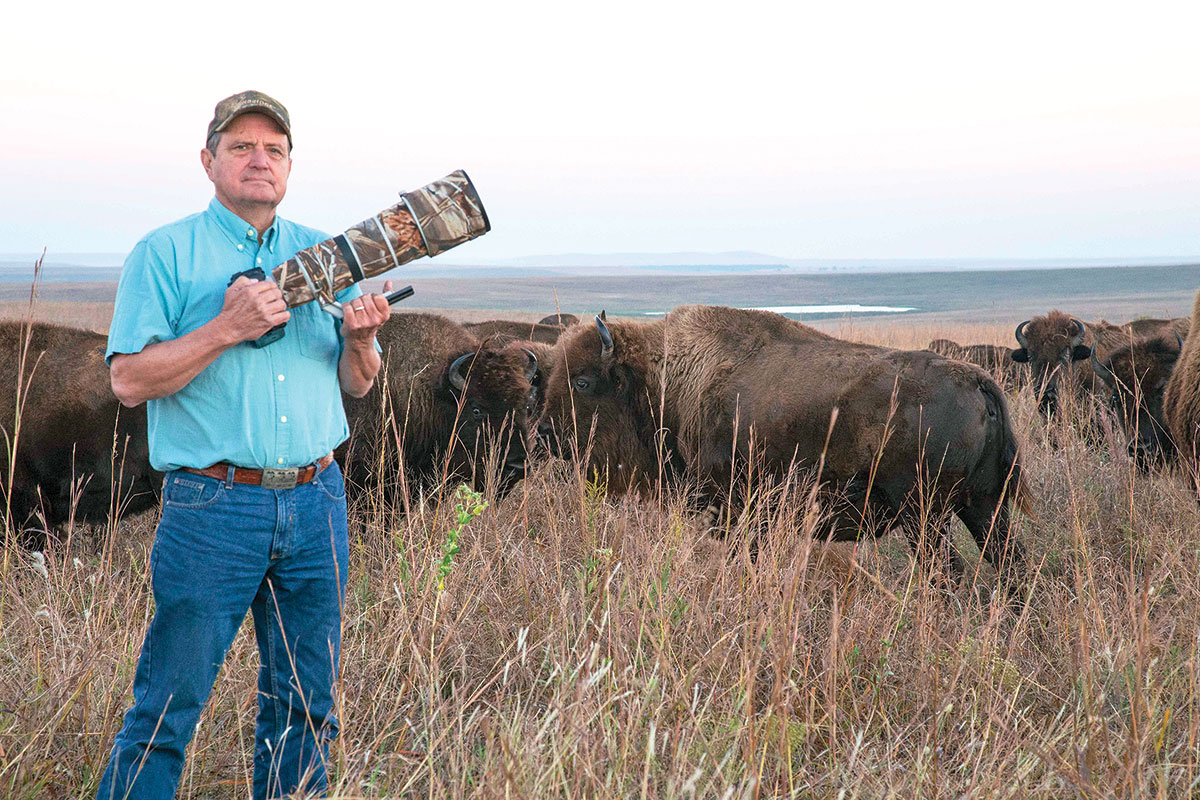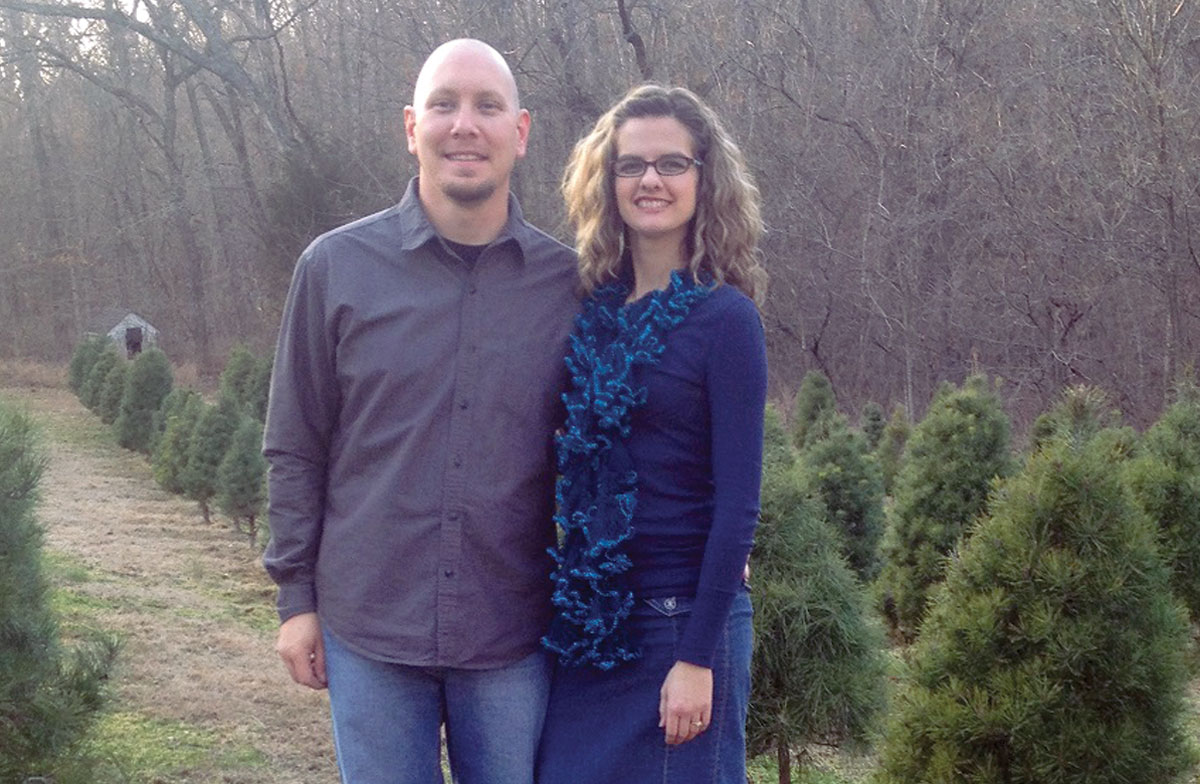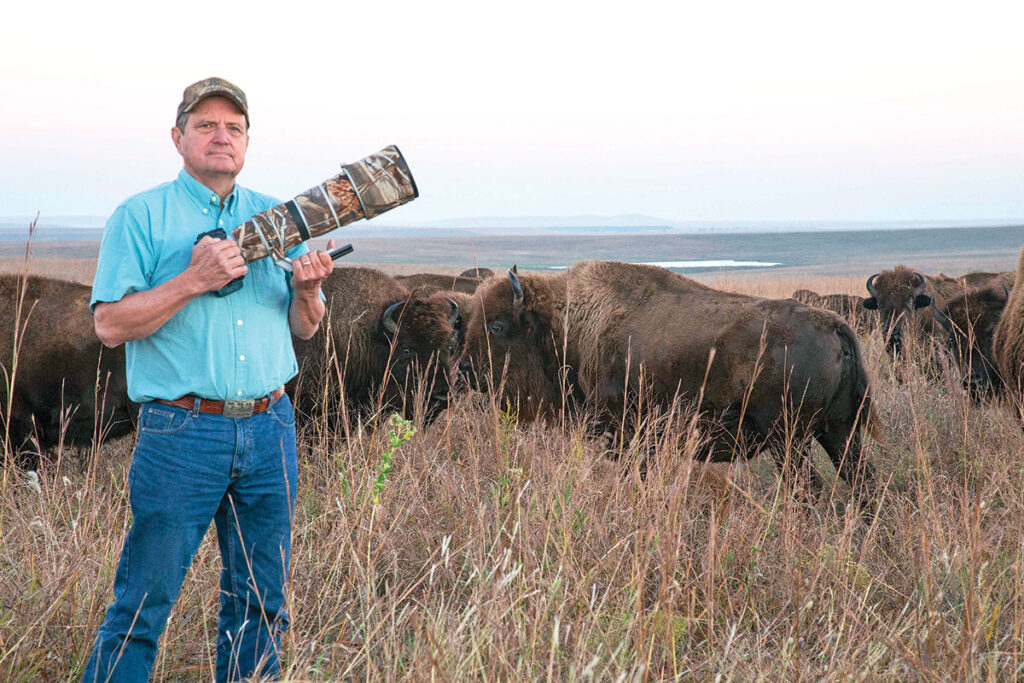
Oklahoma-based preserve has 25,000 acres for bison and 14,000 acres of leased cattle range
The Nature Conservancy was incorporated as a nonprofit on Oct. 22, 1951, and focused on purchasing land for conservation purposes. In the 1970s, focus began including scientifically gathered information about the plants and animals in each preserve. Now the organization is dedicated to gathering and making science-based information public with many universities undertaking research. The organization and its affiliates have spread to each state and over 70 countries with more than 1 million members protecting 119 million acres and thousands of miles of rivers.
The Joseph H. Williams Tallgrass Prairie Preserve, the only tallgrass preserve anywhere, became part of the Conservancy in 1989 with the lion’s share of the 40,000 acres coming from the Chapman-Bernard ranch. It is located about an hour north and a half and a bit west of Tulsa, Okla. School children across the country began fundraising and sending small checks to help pay for the preserve’s range while a rancher donated 300 bison. Recognizing the importance of the everyone’s efforts, Gulf War General Norman Schwarzkopf said the preserve was “a gift from the American people to the American people.”
Now 25,000 acres are set aside for free range bison with 14,000 acres leased as cattle range and the site of research projects.
The Oklahoma Conservancy receives no federal or state taxes and is dependent upon income from a small endowment, leasing cattle grazing land and an online Buffalo sale whose goal is to maintain 2,250 head. The much funding, however, comes from individual and corporation donations which also help support vital research because so much about the complexity, durability and flexibility of grasslands is unknown and will take many years to understand. An example is patch burning in the cattle area, an Oklahoma State University project. More than 200 scientific papers have been written on this unique preserve which is also a favorite with birdwatchers.
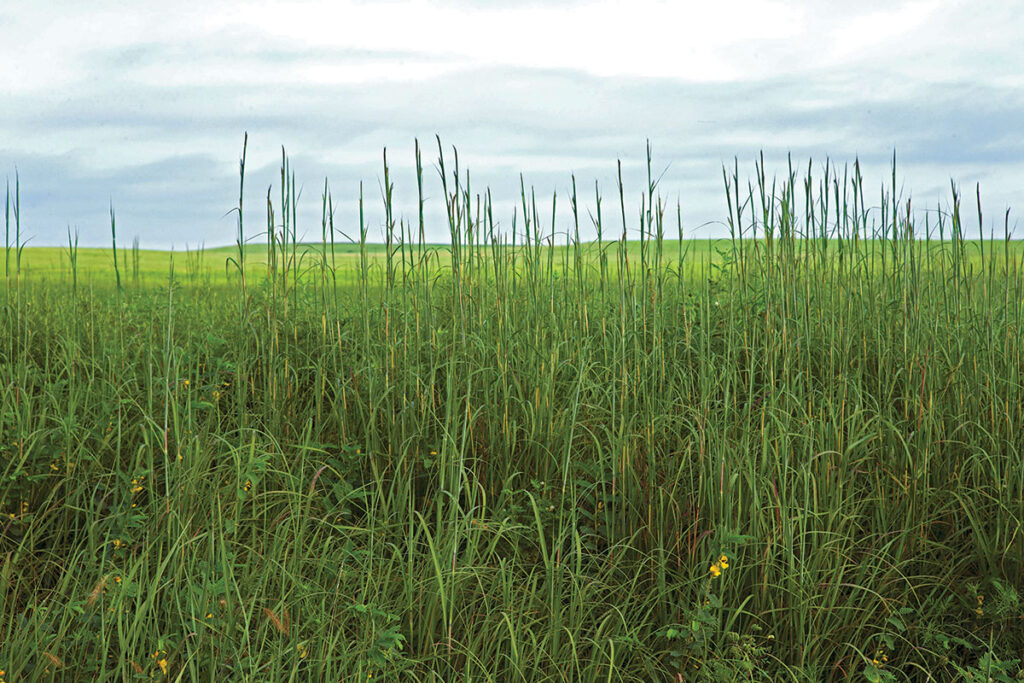
Tallgrass land is even more endangered than the highly publicized rain forests with soil depth, fertility, rain, the degree of grazing and whether or not the land has been burned affecting its vitality.
Most don’t realize human intervention began up to 12,000 years ago when Native Americans wanted to increase the supply of wildlife available such as bison, deer and turkey for hunting while also providing some offense and defense in conflict with other tribes.
In prehistoric times, the Oklahoma land and climate were influenced by the glacial age. The area was heavily forested and more like northern Minnesota forests with a preponderance of spruce and jack pines. When the Native Americans began their efforts to transform the forests, two other forces were at work: climate and grazing, primarily bison grazing. According to Oklahoma State University, natural lightning strikes cause prairie fires in March/April and late summer when the land is dry and rain typically scarce. The highest incidents of fires historically occurred in mid-October and were almost exclusively set by native Americans. One practice followed today at the Conservancy is setting fire to one-third of the bison unit as part of an ongoing effort to mimic the seasonality of historic fires that shaped this landscape.
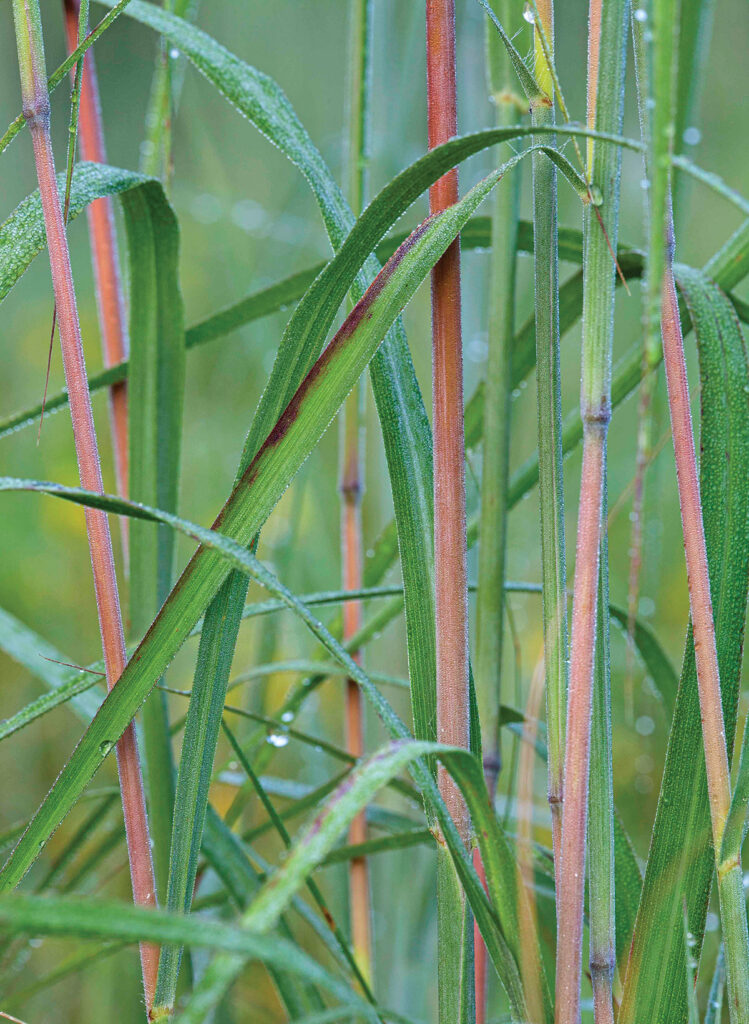
The preserve has more than 750 species of plants. The dominant warm-season species is Big Blue Stem or the giant redwood of the grass kingdom as it is called by Harvey Payne, the first director of the preserve. Unless overgrazed, the grass is hardy and thrives under Conservancy burning practices. He has measured the grass to be over 10 feet tall at the end of its productive season in mid-September. The current species of Bison is now about 6,000 years old and eats almost exclusively grass, while white-tailed deer prefer the new growth following the burn. Deer can be seen grazing in the middle of the enormous grassland rather than hiding or browsing in the forest.
Harvey Payne (pictured on page 10) served as director for 18 years. Hiram Payne, Harvey’s grandfather, walked, not rode, from 100 miles east of Springfield, Mo., to Oklahoma in 1891 to participate in the land run. He claimed 160 acres, which he subsequently sold when he moved to northern Oklahoma in 1917 where he purchased land that is still in the family. Harvey’s mother Jane lives there and is an example of the pioneer spirit because at 93 she still mows 10 acres around her home and barn on a riding mower.
Harvey has a 1,500-acre ranch with other acreage scattered around. He leases part of the land for stockers while also raising horses and bison. The bison are used for meat and sold by private treaty to friends who also want the tasty, low-fat meat.
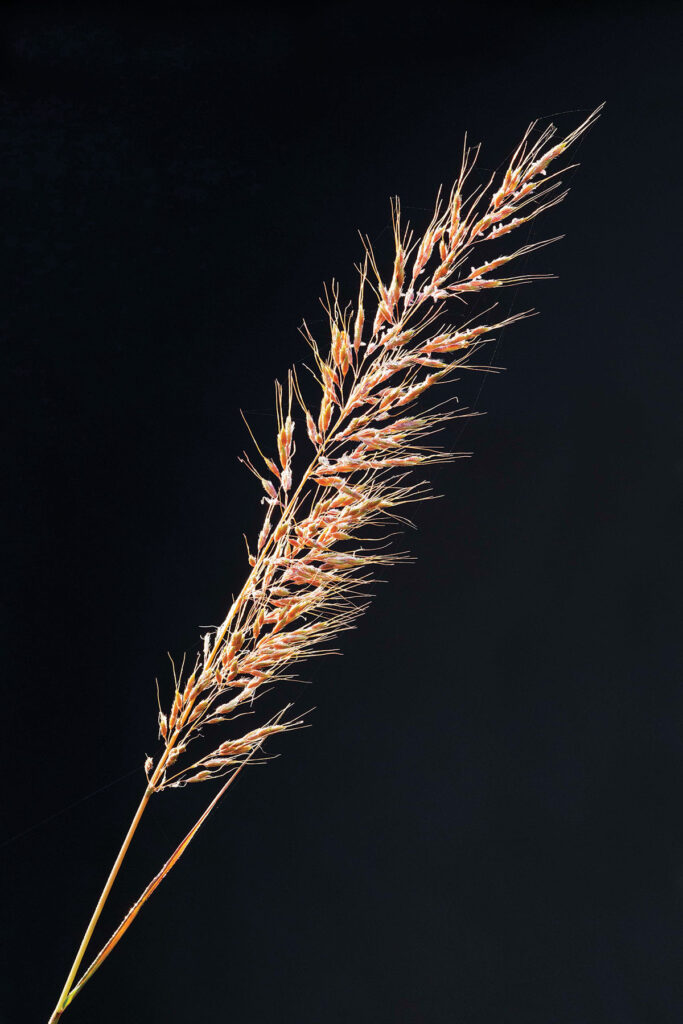
“One purpose of our tallgrass research is to show that long-term soil health is promoted by diversity while the same diversity does not hinder production,” Harvey said. “Ranchers and farmers love the land and the wildlife it contains. Our research has shown modifying current land management practices can promote both, although transitioning does take time. If cool-season native grasses such as Western Wheatgrass are nurtured, cattle can graze more and require less grain during winter months.”
COVID brought so many people to the Tallgrass Preserve that traffic became an issue. However, the traveling season is ready to start, and the preserve is a perfect place to go. The preserve contains two hiking trails separated from grazing areas, meandering dirt roads, a restored bunkhouse, a small cabin once belonging to noted Osage author John Joseph Matthews and a gift shop. There is no admission charge, and visitors are welcome seven days a week.
“The preserve is an important resource to help people deal with our pandemic world. Driving through the grasslands restores your soul and helps you know that things are and will be fine. Nature provides salvation.”
– Harvey Payne
As our world becomes more populated and the need for food increasingly critical, nature may also supply some solutions. A visit to this serene and rare place can demonstrate what may be a vital resource for meeting future needs while singing ever-present soothing nature songs so needed as we ease toward a more normal resistance.

